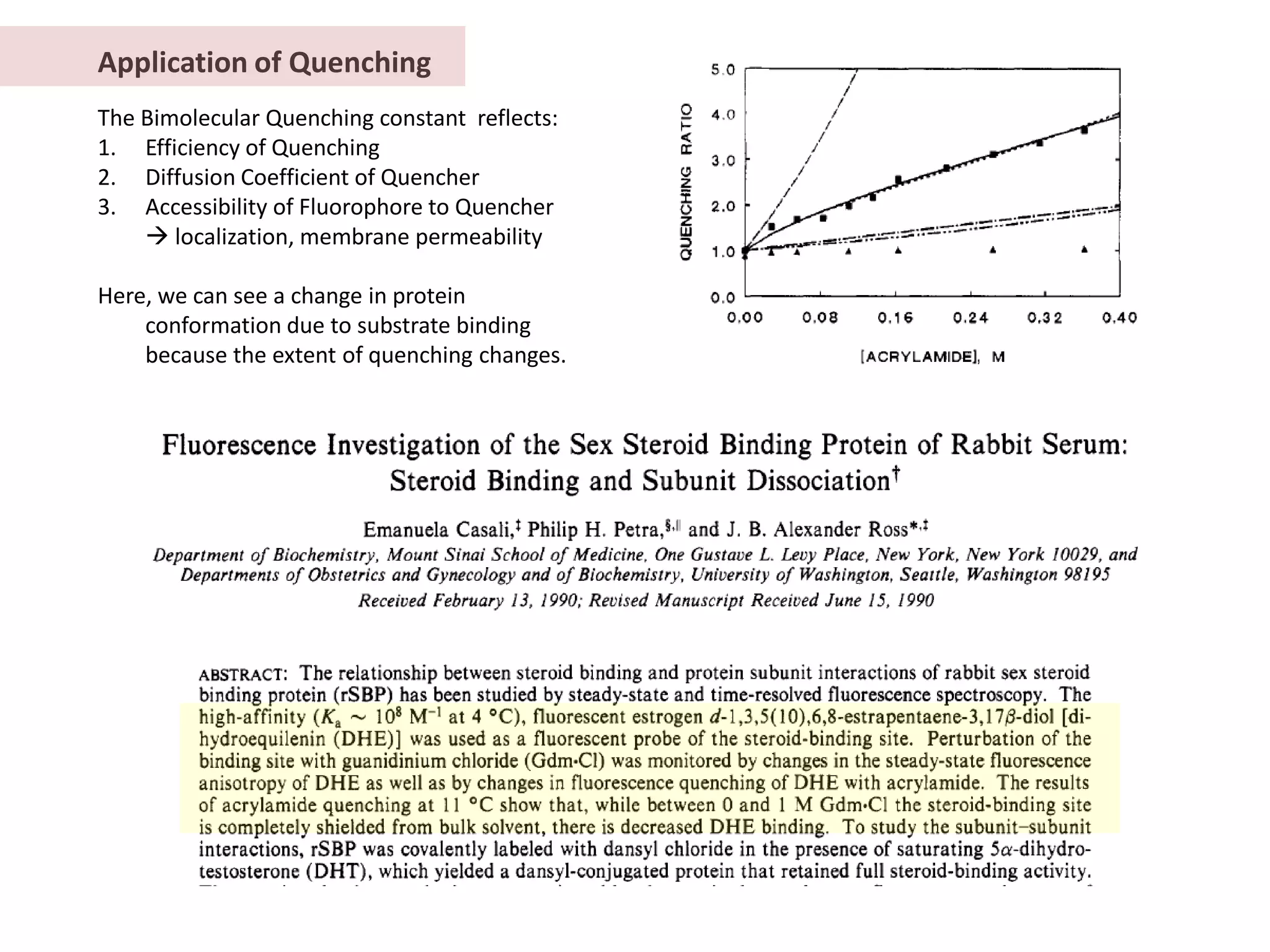This document discusses fluorescence quenching, which decreases fluorescence intensity. There are three types of quenching: collision/dynamic, static, and apparent. Collisional quenching involves diffusion of a quencher to collide with the fluorophore during its excited state lifetime. Static quenching involves formation of a non-fluorescent complex between fluorophore and quencher. Apparent quenching is not truly quenching but involves optical effects. The Stern-Volmer equation relates fluorescence intensity in the presence and absence of quencher. Deviations from linearity of this equation can indicate a combination of static and dynamic quenching. Fluorescence quenching can provide information about fluorophore accessibility and conformational
![Fluorescence Quenching
Any process which decreases the fluorescence intensity of a sample
Collision/
Static Apparent
Dynamic
Quenching Quenching
Quenching
Collision returns fluorophore to G.S. Binding, Optical density,
without photon emission, Complex formed is non-fluorescent turbidity, etc not
Quencher must diffuse to fluorophore useful
during lifetime of excited state. Amines, chlorinated hydrocarbons
excited-state charge-transfer complex.
Molecular oxygen best Fluorescence from complex is quenched in
Paramagnetic, spin-orbit coupling, polar solvents.
intersystem crossing to long-lived, easily
quenched triplet state.
Iodine, Bromine (heavy atoms) F0/F = 1 + KS[Q] Stern-Volmer Eqn.
intercept slope
F0/F = 1 + KDτ0[Q]
F0/F
Fluorescence lifetime
KD = Kqτ0 in the absence of KS or KD
quencher
1 --
Bimolecular quenching constant
[Q]](https://image.slidesharecdn.com/applicationoffluorescencequenching-121203151610-phpapp02/75/Application-of-fluorescence-quenching-1-2048.jpg)
![Deviation from Linearity
Linearity all fluorophores are equally accessible to quenchers
In this case, quenching is either Static or Dynamic but not both.
How do we decide which mechanism is at play?
Static – Dynamic Bend towards x-axis Quenching
τ0/τ = 1 -- τ0/τ = F0/F starts to saturate because few of
Slope falls wit T – rises with T
Absorption spectra changes – no change
the fluorophore molecules are
inaccessible (How many Trp
residues are on the surface of
protein?)
Bend towards y-axis Combination of Static quenching and Dynamic quenching
(second order in [Q])
F0/F = (1 + KS[Q])(1 + KD[Q])
Kapp
F0/F = 1 + Kapp[Q]
KSKD
KS + KD --
Kapp = ((F0/F) – 1) / [Q] = KS + KD + KSKD [Q]
[Q]](https://image.slidesharecdn.com/applicationoffluorescencequenching-121203151610-phpapp02/75/Application-of-fluorescence-quenching-2-2048.jpg)
